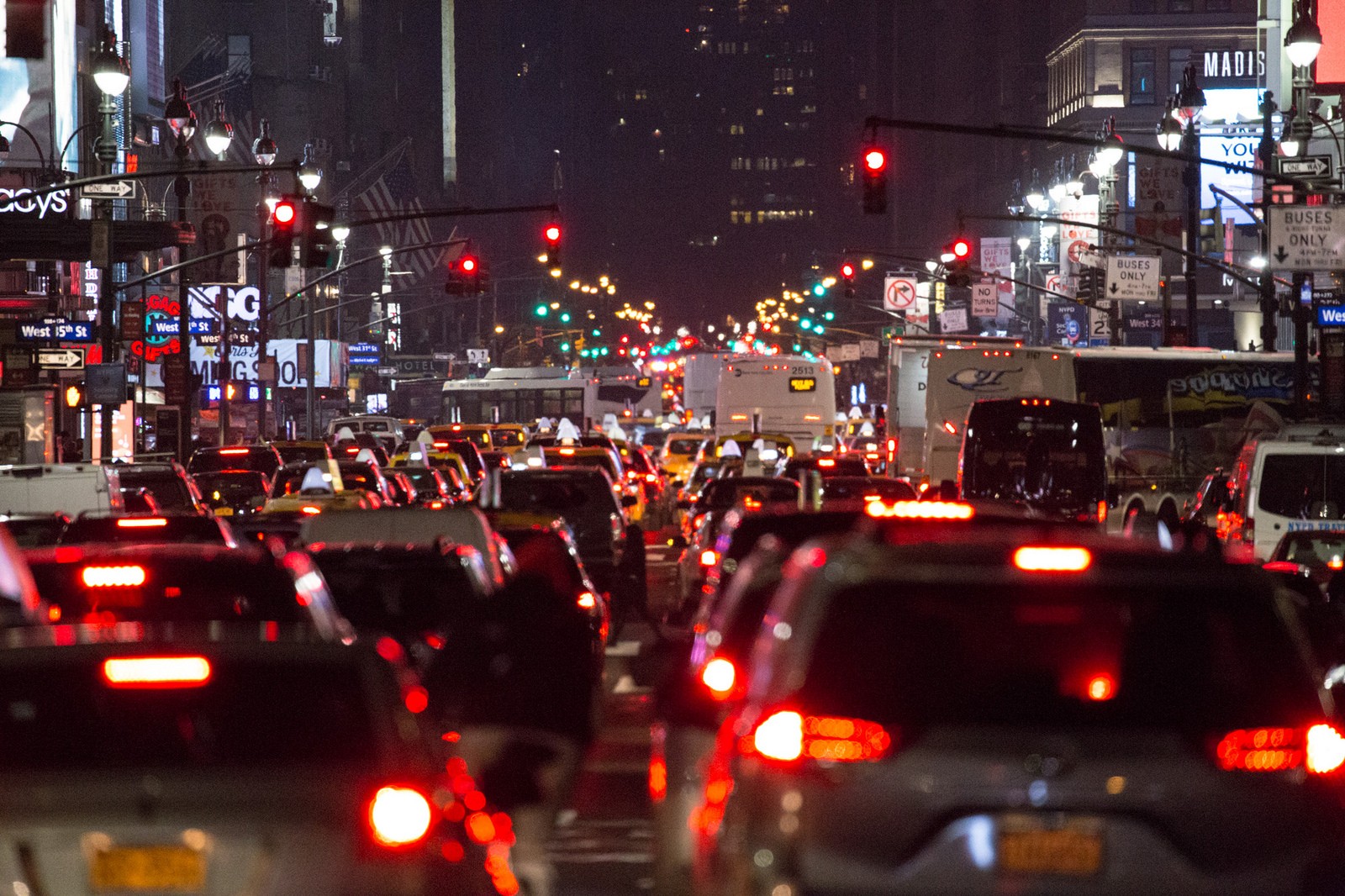
Summary & Quick Facts
- Driving at night is more dangerous than daytime simply because it’s darker.
- Drivers should always drive slower at night than they would in daylight.
- Lowlight can have a significant impact on your ability to see obstacles and dangers on the road.
- NYC law requires drivers to use their headlights 1 ½ hours after sunset to 1 ½ hours before sunrise.
- Motorist should always “drive within the range” of their headlights at night.
- Be considerate when using your cars high beams
- Dimming your high beams prevents dangerous glare that is distracting to other drivers, bikers and pedestrians.
Driving At Night In NYC Is Not As Easy As It Sounds
Driving in a city like New York always presents a unique set of challenges. Here, traffic tends to be ridiculous especially during rush hour. Moreover, you can find yourself lost in a maze of one-way streets in the city if you don’t know exactly where you’re going. Finally, let’s not forget that pedestrians and bikers seem to pop out of nowhere. All of these challenges get tougher to navigate when the sun sets and night comes. While everyone wants to hit the town for a night of fun after the sun, it’s important to remain safe on the city streets while driving out there. Here are some tips to remember for night driving and taking the car out for a spin after dark.
Why Can Night Driving Be So Dangerous?
If you aren’t careful, night driving can be extremely dangerous in the city. Why? At the end of the day, night driving is more dangerous simply because it’s darker. The lack of light can have a significant impact on your ability to see obstacles and dangers on the road. Even though the city sports so many street lights, still, you can find yourself on a dark corner or even block. Here, the distance you can see ahead or to the side is greatly reduced.
Between shorter days, compromised vision in low light, fatigue, and even fatigue, it’s easy to see there are many factors that all contribute to making driving at night more dangerous than any other time of day. In fact, the risk of a fatal crash is three times greater at night, according to National Safety Council research.
Tips Drivers should Use For Night Driving
Drivers should always drive slower than they would in daylight. This is especially true in unfamiliar areas or narrow streets with sharp curves. Since car headlights typically cover about 350 feet ahead it’s important to drive at a speed that allows you to stop safely within this distance. This is called “driving within the range” of your headlights.
Headlights Are Your Best Tool
The law requires drivers to use their headlights from an hour and a half after the sun sets to an hour and a half before sunrise. Usually, around this time, visibility is less than 1,000 feet (300 m). Drivers are also urged to use you use headlights in inclement weather with low light such as dense fog. It’s important for drivers to use headlights even if they do not help you see in low-light periods. After all, headlights also help those outside of your car and make it easier for other drivers and pedestrians to see your vehicle. Never use your car’s parking light or daytime lights as a replacement. At the end of the day, headlights do a better job illuminating low-light situations. If an oncoming driver flashes headlights at you during a period of low visibility, it means your vehicle was difficult to see and you should turn on your headlights.
What To Do With Your High Beams
It is also important to be considerate when using high beams at night. Your car’s headlights must be on low beam when you are within 500 feet of an oncoming car or within 200 feet (60 m) of a vehicle ahead of you. This rule applies even if the vehicle ahead is in a different lane. Drivers should also dim their high beams for pedestrians and bikers who approach you. Considerate use of your high beams prevents dangerous glare that is distracting to other drivers and pedestrians.
If an approaching driver does not dim their headlights, quickly flash your headlights to high beam, then return to low beam. If they do not turn them down, move your eyes to the right to help avoid the glare of the approaching high beams. You can also use the edge of the street as a guide until the approaching vehicle passes by.
Don’t Forget About Your Car’s Interior
Light from inside your vehicle or from street lights makes it harder for you to see the road ahead. In this case, keep your car’s interior light off when driving and if possible, dim the dashboard lights. Heavily tinted windows can also have a dramatic effect on your ability to see outside of your car. Make sure you have legal grade tinted windows that are not too dark.
A dirty windshield increases glare from approaching headlights. Make sure your lights and windshield glass are clean for night driving.
Finally, To reduce glare from the lights of vehicles behind you, switch your inside rearview mirror to the “night” position. Most cars have manual rear view mirrors so if you have one, all you need to do is flip the tab at the bottom of the mirror. This will change the angle of the reflective material behind the mirror’s glass, allowing you to still see what’s behind you while deflecting away any blinding light from bright headlights. If you have a power mirror, it works in the same way: simply activate nighttime mode. How to do this, however, will vary depending on the make and model of your car.
